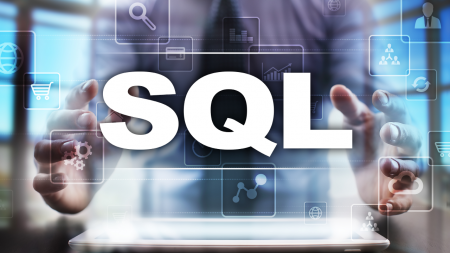You’ve heard it a thousand times – tax is tax. However, not all tax software integrations are as straight forward. Learn how to guarantee your team’s success while saving both time and money with D365, NAV, and GP.
Search Results: IT (6567)
Luck Stone needed to save customer invoices that are automatically generated during the posting process in D365FO to their Customer Portal. They needed a solution without heavy customization, resistant to Microsoft monthly updates, but also seamlessly integrated with Print Management. Additionally, they wanted to utilize Azure Event Grid which supports Azure blob storage events. The problem was, how to automate saving invoices from D365FO to an external Azure blob storage and trigger Azure Event Grid. Luckily, they found a simple solution! By attending this session you will learn all about it and be able to apply it in your D365FO implementation.
The content of this session is geared toward an audience with beginner to intermediate-level knowledge of the subject area.
This session will be available for CPE credits pending completion of session survey post event.
Join your DSLUG community to kick off Community Summit with important new updates, new feature overviews and awards. Be the first to hear the Microsoft Dynamics SL product updates and road map delivered by Jeff Suwyn, Microsoft Dynamics SL Product Manager. Don’t miss this important session for all Conference attendees, focusing on the future direction of your User Group and your Dynamics SL product — and be ready for a great time along the way!
Now you can have your cake and eat it too. By leveraging dual-write functionality within CDS, We can now leverage the maintenance plan portion of F&O combined with Field Service to manage the entire work order lifecycle all without having to implement the entire Finance and Supply Chain Management solution. By doing this, customers are now able to use the robust maintenance plan functionality that’s in Dynamics 365 Supply Chain, combined with the world-class capabilities of Dynamics 365 Field Service. By combining dual-write, Field Service, and the Asset Management module, we can provide a stronger, more comprehensive asset management solution within CDS. So Dynamics users can now get a solution that can perform very complex maintenance scenarios, but also be more agile and easily configured. It’s a bit like having your cake and eating it too.
When people and process work together, a sales team’s velocity can take off! But it can be tricky to get people-centric teams to describe what they do in a process-centric manner. And it can be challenging to select the right process automation tool in Dynamics 365 and configure it to align with the needs of your team.
In this non-technical session you’ll learn methods for engaging your sales teams in process design, and the basics of configuring processes in Dynamics.
Our agenda for the day will cover:
•Understanding the Customer Journey – how to align your sales process with the customer buying process
•Sales Intelligence – tools and techniques to build lists and research your audience before first contact is made
•Lead Generation – generating more, and better, leads for your sales team to work and using AI to prioritize them for follow-up
•Qualification – processes and solutions for going from unqualified, to marketing qualified leads (MQLs) to sales qualified leads (SQL) – and some simple definitions for these terms
•Account Based Marketing (ABM) and Sales – targeting large accounts for broadening and deepening your relationship
•Sales Pipeline and Process Design – design a process flow that your team can actually use without creating more friction in the selling cycle
•Quoting and Configure-Price-Quote – delivering higher quality quotes to your customers no matter how simple or complex your product is; and secrets for differentiating tactical sales from strategic sales
•Approvals and E-Signatures – expediting internal and external approvals to keep your team focused on selling
•Activity Planning, Tracking and Sales Cadencing – understanding the importance of activity management, and how playbooks, sales cadencing tools and AI can all play a role in improving activity adoption
•Sales Meetings and Team Engagement – using Dynamics 365 to run your sales meetings, and techniques for getting the whole team engaged in continuous improvement
Are you finding managing and administering security to be one big headache? Want to get back to you day job? Are you concerned the roles you are building may provide more access than you are aware of? Concerned you are over provisioning security and going to get hit with a large license bill later? If you answered yes to any of these questions, please join this session where we show how the Security Designer tool from Fastpath can make all these problems vanish. We will show you how Security Designer makes it just plain easier to manage security day to day, but also more importantly helps you design and test security, before deploying to production. We will cover security best practice ideas around least privilege and how you can save money from a user licensing standpoint with Fastpath’s easy licensing reports. Security is hard, let us show you how with Fastpath Security Designer it does not have to be so!
Configuring a Dynamics 365 Finance and Operations system requires settings on hundreds of forms. In this session, we look at how you can use data management to streamline the setup of a new system with spreadsheets. Once you have these spreadsheets, they can be used to guide you through the setup in an orderly fashion.
This type of configuration is not without challenges, including the format of the data, number of spreadsheets required, the order to run the sheets. Laura has been fully configuring systems since AX2012 with spreadsheets for 7 years and will walk you through the challenges and ways to overcome them.
Do you have multiple companies? Should you use copy company or some other methodology? Let’s look at the pros and cons of copy company vs. rerunning the same spreadsheets into the new company (ies).
Once you’ve configured you have to migrate data. Some of the challenges with data migration are similar but there are also unique challenges as well. Next we talk about the differences between configuration and data migration and how you use the data management framework differently for data migration. Customers and vendors have some real challenges to be able to load this data and then update it if addresses or other information changes. There are some techniques that can be used to guarantee updates are possible without having to look up record ids, party numbers, or address/location ids.
Learning Objectives:
•Understand the challenges with loading many data entities at once and ways to overcome those challenges
•Using Excel to help build the data to be loaded
•Knowing what to migrate from legacy systems and key data entities that will be required
•Steps to validate data
•What to do when you make a mistake and all that bad data is in your system
Audience: Functional and Technical staff responsible for configuring D365 Finance and Operations and loading data from other systems
Level: Intermediate
Prerequisite: Basic knowledge of data management framework required
Preparation: Please bring your own internet capable Windows PC to class for the hands on lab portion/class exercises.
Are you ready to be the office GP Champion? Join this session to explore over 40 different ways to save time, be more efficient AND use GP in ways you never thought were possible! Brand New for Summit 2020! We will cover Financial Module, Sales, Purchasing, Inventory and More!! 40 is a lot but no worries, full documentation will be included – come and have fun AND learn!
This session is geared for an audience with an intermediate skill set.
This session will be available for CPE credits pending completion of session survey post event.
Regardless of your level of experience with GP, none of us know it all; but you will leave this session with a list of navigation features you didn’t know existed or didn’t know how to use in the software. If you’re new to GP, this session is a must. We will show tips, tricks and shortcuts around reducing mouse clicks making your daily tasks and navigation in Dynamics GP more efficient. A few surprises are always in store during this fast paced session.
This session is geared for an audience with a basic skill set.
This session will be available for CPE credits pending completion of session survey post event.
Don’t be afraid of your accounting software! Be honest. Managing your accounting software can be daunting and many IT departments take a “hands off” policy, but it doesn’t have to be that way.
This technical hands-on course will teach you what makes GP tick, from “Why it’s done that way” in client installation, to GP table structure, managing Security, SQL backup strategy and connecting GP using web services and other tools.
We will navigate the ins and outs of the client installation, explore the depths of security, not only for GP, but for SSRS and Excel Reports, and dive into the GP tables to understand how they interrelate and how to setup SQL maintenance for peak efficiency.
We will review the importance of SQL backups, selecting a strategy that best fits your requirements, and discuss disaster recovery options.
We will review the GP web client install process and common mistakes that administrators make that require you to reinstall every year if not done properly. You will understand why in today’s environment you can NOT afford to deploy the web client.
You will also come away with a better understanding of how you can integrate with GP using web services, econnect and OData. We will review the major options for integration and, time permitting, may dive into a few of the tools towards the end of the course.
Audience: Dynamics GP Power-Users, IT Professionals, and Dynamics GP Support Professionals
Level: Beginner to Intermediate
Prerequisites: Functional knowledge of Microsoft Dynamics GP
Preparation: Please bring an internet capable Windows PC to class for the Academy’s hands-on training environment.
Training Materials: Will be supplied by the instructor as appropriate.
e.
When it comes to document management, Dynamics and SharePoint offer a myriad of options … not all of them good. Even the built-in SharePoint to Dynamics integration can create more problems than it solves.
In this session, you’ll learn what nobody tells you about SharePoint to Dynamics integration – including case studies on how different approaches for document management in Dynamics 365/CRM are working for different organizations.
We will review all the available options, from using the built-in Dynamics document management, to SharePoint, to Teams, to Power Automate to custom code to third party add-ons. You’ll learn the different solutions that work best in different scenarios and you’ll learn from how one organization setup a complex SharePoint integration and how they’re modernizing it with Microsoft Teams.
The content of this session is geared toward an audience with intermediate-level knowledge of the subject area.
Ever wonder what the folks in IT are doing when you ask them to pull data for you from Dynamics GP? Did you ever wish you could do it yourself? Well join us for this fun hands-on class and soon you’ll be speaking and using SQL like a pro!
We’ll start from the very beginning and teach you the elements of a SQL query with a focus on the Dynamics GP data structure. SQL allows users to ask a question of the database, and have it answered in a very specific way. Although it may look like gibberish to you today, SQL is one of the most logical languages there is and we intend to make it easy for you to read and write it, but beyond that, SQL actually allows you to ask a series of leading questions, coupled with specific commands, grouped together to get to the answer you really want. It’s like truth serum for your data!
Through interactive lectures and hands on examples, attendees of this class will learn:
•Understand how to employ SQL to get data out of Dynamics GP
•What is SQL and how can it be used in relation to Dynamics GP
•The components of an SQL Select query
•Different ways to connect data sources (JOINS and UNIONS)
•How to find data within Dynamics GP
•SQL Functions that can make queries better
•What to do with your query after it is written
•What are UPDATE, INSERT, and DELETE commands?
•How do we build a query, stored procedure, or function? For that matter, what are queries, stored procedures, and functions?
•More SQL functions, and how they help us navigate our Dynamics GP data.
The class will start out assuming attendees know nothing about SQL or programming and will quickly progress them to a point where they can effectively ask a complex question of their Dynamics GP database, as opposed to waiting for someone else to ask it for them.
After the basics, attendees will quickly advance to a point where simple reporting, data manipulation, or support needs needn’t wait on an IT resource to be available.
Audience: Anyone who wants to understand SQL
Level: Beginner
Prerequisites: An open mind and a positive attitude.
Preparation:
•Students should bring an internet capable Windows laptop computer to the course.
•The detailed instructions for connecting and attending the class will be sent a week prior to class.
•There will be short installation that will need to be completed, in order for you to have access to the training environment needed for labs and exercises.
•Your instructor will use a hands-on training environment.
How do you expand reporting when your GP SQL server is overloaded? Set up a new server…isnt that costly? What if it was less than $100/month? Don’t we need a SQL DBA? No, with Azure Data Factory it’s easy for a business analyst with intermediate SQL skills to copy tables, transform data, and build sophisticated workflows. Power Platform offers similar capabilities, but you might need a full database where you can build views and stored procedures.
In this session, we will walk you through the process of installing a gateway and programming all the logic from the Azure portal.
This session is geared for an audience with an intermediate skill set.
This session will be available for CPE credits pending completion of session survey post event.
In today’s business climate, where the focus increasingly is on remote work and digital solutions, user adoption has never been more important. ClickLearn ensures the success of any Microsoft D365 CE implementation or upgrade project by enabling authors to deliver more and better content for training and documentation. In this session, where we unveil a whole new user experience, you will see how you can record your processes and with a single click, produce a complete e-learning portal in 45 languages with step-by-step instructions, virtual assistance, e-learning, and process videos. You can use the virtual assistant to guide your users from within your live solution.
You will also see how the Replay function lets you automatically update any existing content (including screenshots) to reflect updates to Dynamics 365 for Customer Engagement – including any third-party applications. This feature is particularly relevant for large, global organizations because you can also use it to automatically create language versions of your content with a single click.
Looking for a better way to get payroll information into the hands of your employees? Wanting to do away with mailing W2’s to everyone? Maybe you need a better way for employees to update their W4 information.
In this session, attendees will learn what it takes to get employee self-service set-up and ready to use. Discussion points will include licensing requirements, software installation needed, and set-up in GP for employees.
Then attend the next session where we demonstrate how employees will use Self-Service!
This session is geared for an audience with an intermediate skill set.
This session will be available for CPE credits pending completion of session survey post event.
If you are emailing sales invoices, chances are that you are not doing it in an optimal way. There are many possible improvements of this process and we will describe the most beneficial ones. We’ll discuss the critical emailing shortcomings in D365FO and will show you the potential solutions. Whether you are a power user or a functional consultant, we will teach you which customizations to require from your developers in order to get the most out of your emailing process.
The content of this session is geared toward an audience with beginner to intermediate-level knowledge of the subject area.
This session will be available for CPE credits pending completion of session survey post event.
No matter where your employees are working these days, it has become crucial to implement the technology and tools to ensure that our remote teams are able to stay up-and-running without missing a beat. Join this presentation to learn how MetaViewer Paperless Automation helps Microsoft Dynamics GP end users manage their payment processes efficiently, securely and flexibly.
We all know the Data Lake and Azure Synapse is on Microsoft’s road-map for D365FO. Join Azure Synapse and Data Lake experts to learn more about this exciting technology and how it can transform you business into a data-driven organization! Learn how the Canada Goose company is using these business intelligence tools enhance productivity in the company.
The content of this session is geared toward an audience with an intermediate-level knowledge of the subject area.
This session will be available for CPE credits pending completion of session survey post event.
For GP admins, there is often a need for some basic SQL skills and knowledge. You may not have an IT background, but with some light training you can find the details on how to navigate SQL Server Management Studio and perform some valuable SQL tasks. This session with give an overview of that navigation as well as cover some of those key SQL functions including backups and maintenance as well as the table structure and the intro to report writing with views. If you are a GP admin looking for additional SQL knowledge, this session is for you.
This session is geared for an audience with a basic skill set.
This session will be available for CPE credits pending completion of session survey post event.
Flip your organization upside-down and see what comes out!
In this session, you will learn a simple technique for changing the culture inside your organization, which can result in increased process efficiency and reduced costs.
This approach is not just for manufacturing! A continuous process improvement culture can be effective for all functional areas (finance, IT, warehouse, sales, etc.) and all types of businesses (grocery stores, law firms, hospitals, distribution centers, and much more). If you have any process at all, this method can help you!
Join us and see how continuous process improvement works and how you can start implementing it in your organization today.


















